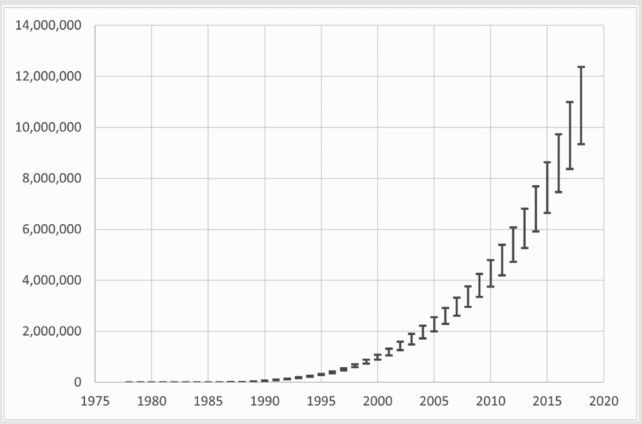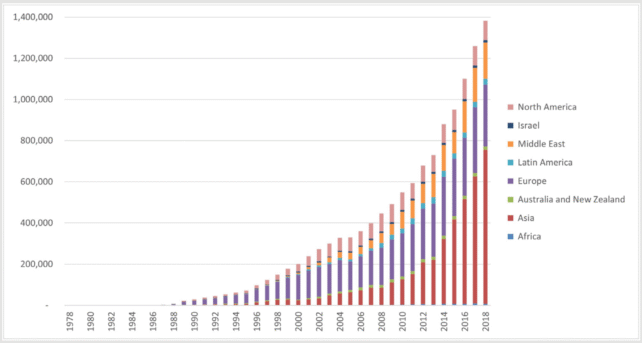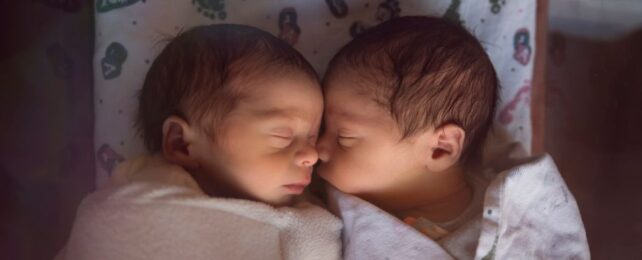More than 13 million people worldwide owe their lives to in vitro fertilization (IVF), according to the first estimates of their kind.
Since the original 'test tube' baby was born in 1978, the number of children brought into the world by IVF technologies – collectively known as assisted reproductive technology (ART) – has exploded into the millions.
Today, an ART-conceived baby is born every 35 seconds, and IVF, where an egg is fertilized by sperm in a test tube, is the most commonly used method.
To figure out how many ART babies have been born since the technology's infancy, an international team of researchers compiled health data from 101 different nations.
Related: 8 Babies Born in UK Using Radical 'Three Parent' IVF Technique
As of 2018, the team estimates between 10 and 13 million babies have been born via ART, while preliminary data from 2018 to 2023 adds another 3 to 4 million children.
"Every year we estimate how many babies were born in the previous 12 months – but we've never actually gone back and used a consistent methodology and extrapolation for missing data to estimate the total number of babies born in the world," says lead author Georgina Chambers, an epidemiologist from the University of New South Wales.
The estimates are not perfect, but Chambers and her colleagues argue they are "a reasonable and sound approximation" based on the "most robust data available in the literature."
The information comes from the International Committee Monitoring Assisted Reproductive Technologies (ICMART), of which Chambers is the data custodian.
Back in the early 1980s, Australia became the first country in the world to establish an IVF registry. While many high-income nations have since followed suit, some countries, like Singapore,either lack formal registries that report to ICMART or the registries have been delayed for many years, as in China.
Even when formal lists are kept, some regional clinics do not report to ICMART, as in the United States, India, and some African countries.
To make up for these gaps in knowledge, researchers tallied the number of clinics within a nation, using that coverage rate to predict ART rates. They also accounted for miscarriage rates where only ART pregnancies were reported.
Their findings reveal that in the 40 years since the dawn of ART, between 9.4 million and 12.4 million infants from 101 countries were born using reproductive technology, with an exponential increase starting around the turn of the century.

Europe tops the charts with 3.6 to 4.5 million infants born via IVF, followed by Asia with 3 to 4 million IVF infants, and North America with 1.4 to 1.6 million IVF infants.
In the last two decades, IVF technology has come a long way, providing cheaper, safer, and more successful routes to parenthood.
The chances of IVF succeeding are far from guaranteed, but health data from the UK show that the average IVF pregnancy rate using frozen embryos has gone from 7 percent in the 1990s to 36 percent in 2021.
No longer is it necessary to transfer several fertilized eggs to increase the odds of pregnancy. As a result, the number of IVF twins and triplets being born is on a steep downward trend.
"Today, more than 93 percent of IVF cycles involve a single embryo transfer, resulting in a multiple birth rate of below 3 percent," says Chambers.
"Most IVF babies in Australia now come from frozen embryos."

"As more babies are born through IVF," Chambers adds, "we hope access to safe, high quality care will become more equitable – and based on human rights – across the world."
The study was published in Fertility and Sterility.
